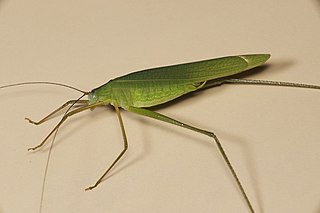Related Research Articles

Yizhou, formerly Yishan County (宜山县), is a district under the administration of Hechi City, Guangxi Zhuang Autonomous Region, People's Republic of China.

Amyzon is an extinct genus belonging to the sucker family Catostomidae first described in 1872 by E. D. Cope. There are 4 valid species in the genus. Amyzon are found in North American fossil sites dated from the Early Eocene in Washington USA, and several Early Eocene sites in British Columbia Canada including the McAbee Fossil Beds, Driftwood Canyon, and the "Horsefly shale", as well as Early Oligocene sites in Nevada USA.

Ethmia nigroapicella, commonly known as the kou leafworm, is a moth of the family Depressariidae. It is found in Madagascar, the Seychelles, India, Assam, Burma, Samoa, the Philippines, Hawaii, Taiwan, Japan and Australia.

Ethmia is a large genus of small moths. It is the type genus of the gelechioid family Ethmiidae, which is sometimes included in Elachistidae or Oecophoridae as subfamily.

Stenothyra is a genus of freshwater snails which have a gill and an operculum, aquatic gastropod mollusks in the family Stenothyridae.

Ethmia maculata is a moth in the family Depressariidae. It is found in China and Taiwan.
Skara is a genus of maxillopod crustacean known from the Upper Cambrian Orsten deposit of Sweden and similarly aged deposits in China. It is the only genus in the order Skaracarida and family Skaraidae, and contains three species:
E. maculata may refer to:
Ethmia dehiscens is a moth in the family Depressariidae. It was described by Edward Meyrick in 1924. It is found in Sichuan, China.
Ethmia ermineella is a moth in the family Depressariidae. It was described by Walsingham in 1880. It is found in Tibet, Nepal, northern India (Punjab), Burma, northern Vietnam and western China.

Ethmia guangzhouensis is a moth in the family Depressariidae. It was described by You-Qiao Liu in 1980. It is found in Guangdong, China.
Ethmia pingxiangensis is a moth in the family Depressariidae. It was described by You-Qiao Liu in 1980. It is found in Guangxi, China.
Ethmia argopa is a moth in the family Depressariidae. It was described by Edward Meyrick in 1910. It is found in Malaysia.
Ethmia hainanensis is a moth in the family Depressariidae. It was described by You-Qiao Liu in 1980. It is found in Guangdong, China.
Ethmia menyuanensis is a moth in the family Depressariidae. It was described by You-Qiao Liu in 1980. It is found in Qinghai, China.
Ethmia yunnanensis is a moth in the family Depressariidae. It was described by You-Qiao Liu in 1980. It is found in Yunnan, China.

Elimaea is a large genus within Tettigoniidae, the bush cricket or katydid family. Species in this genus are found in India, southern China, Indo-China and Malesia.
Xizicus is a genus of Asian bush crickets belonging to the tribe Meconematini in the subfamily Meconematinae. They are found in India, China, Korea, and Indochina.
Megaulacobothrus is a genus of grasshoppers in the tribe Stenobothrini. Species have been recorded from northern and Temperate Asia.

Begonia maculata, also known as polka dot begonia, is a species of begonia native to Brazil. It grows naturally in the Atlantic rainforest, with occurrences confirmed in the Brazilian states of Espírito Santo and Rio de Janeiro. Begonia maculata has green oblong leaves with silver dots. The underside of the leaves is red-purple. The plant's white flowers grow in clusters with yellow centers on a single stem.
References
- ↑ Liu, Youqiao (1980). "A study of Chinese Ethmia Hübner (Lepidoptera: Ethmiidae) in classification, distribution and numerical taxonomy" (PDF). Entomotaxonomia (in Chinese and English). 11 (4): 267–284.